Hue. Let’s be honest, I wasn’t ready for it.
I’d just come from the manic, wonderful, horn-honking chaos of Hanoi.
I’d heard about Hue (pronounced ‘Hway’). I’d heard it was the “old imperial capital.” That it had a “big fortress.” And honestly? I was picturing a couple of dusty buildings. A quick stop-off between the utter, beautiful chaos of Hanoi and the lantern-lit magic of Hoi An.
I was wrong. So, so wrong.
Hue isn’t just a stop-off. It’s the main event. It’s a city that got under my skin, filled my belly with the best food in Vietnam (I said it! Come at me, Hanoi fans!) It left me feeling like I’d actually learned something, all while sipping a 50p beer.
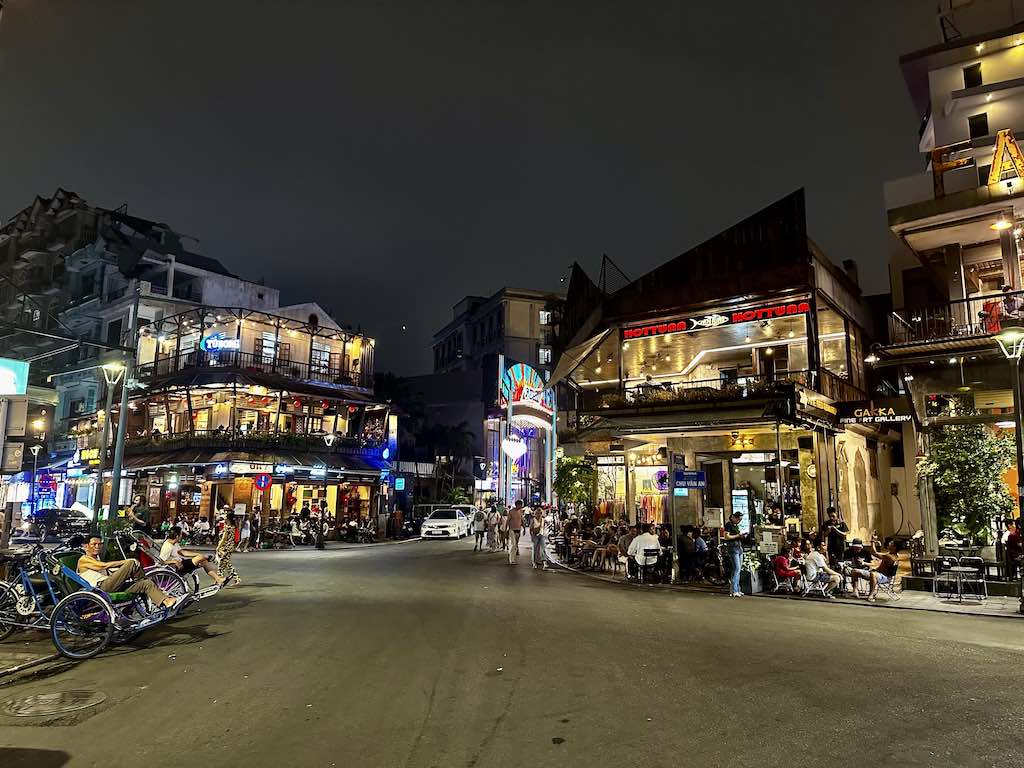
It’s not the roaring, scooter-crazed beast that is Ho Chi Minh City. It’s not the ancient, charming maze of Hoi An. It’s… regal. It’s got a different rhythm. It’s a city that knows its own worth and doesn’t need to shout about it. It just waits for you to discover it, preferably on the back of a bicycle with a stomach full of Bánh Bột Lọc.
So, grab a drink. Let’s talk about how to do Hue right. I’m going to walk you through the essentials. Getting there, where to sleep, what to see, and—most importantly—what to stuff in your face.
Part 1: Getting to Hue – The Logistics
Alright, first things first. You’ve got to get there. Hue is planted right in the middle of Vietnam, which makes it a natural stop on that classic north-to-south (or south-to-north) route. You’ve got options, ranging from “pampered luxury” to “I think my back is broken and I need a massage.”
Option 1: The ‘I’m on Holiday’ Flight
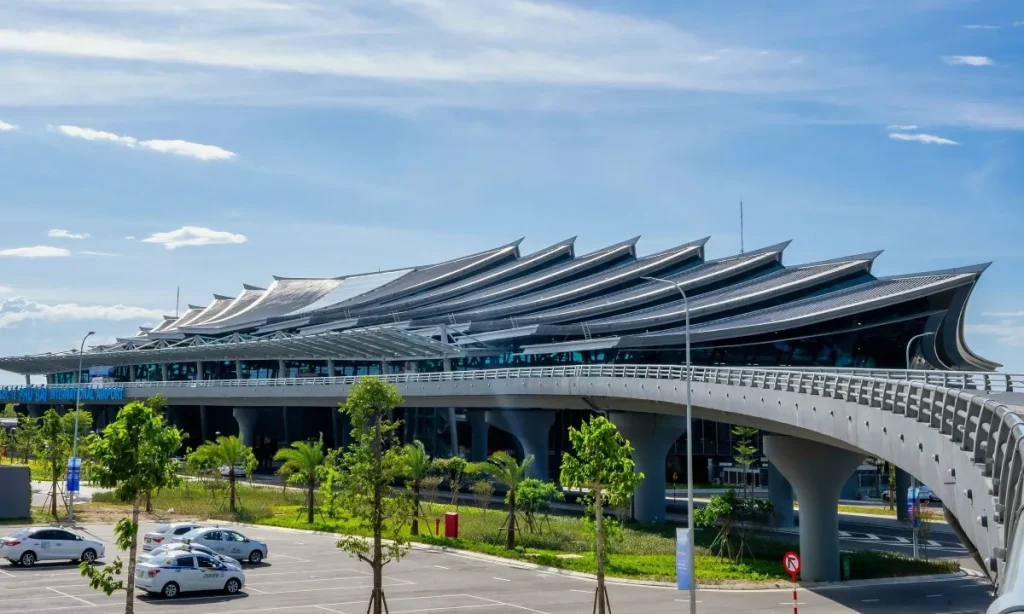
Hue has its own airport, Phu Bai (HUI). It’s small, it’s clean, and it’s efficient. You can get quick, cheap-ish domestic flights from both Ho Chi Minh City (HCMC) and Hanoi in about an hour. I spoke to people who did this, and honestly, they said it was a breeze. A taxi from the airport to the city centre is about 20-30 minutes and won’t break the bank. This is your easy, no-fuss choice.
Option 2: The ‘Classic Traveller’ Train Ride
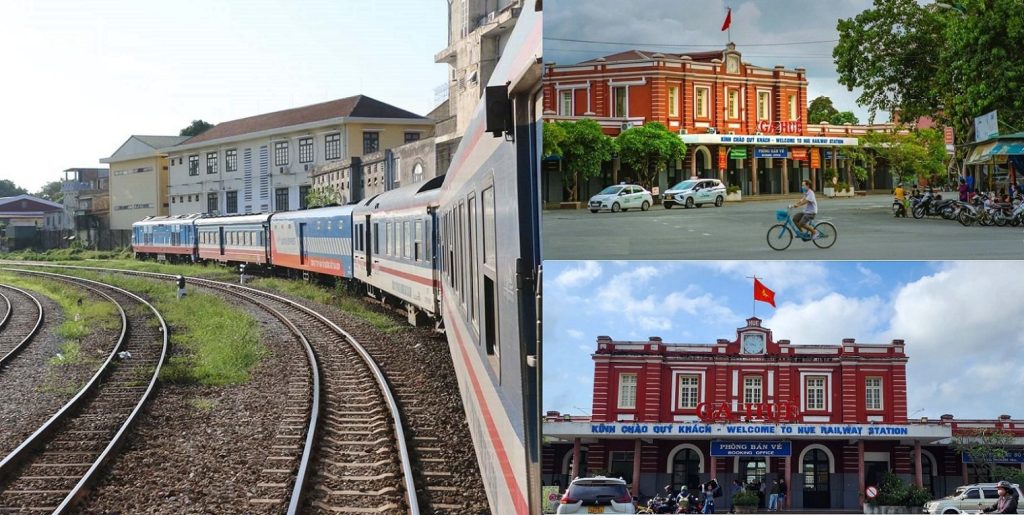
This is the one. The Reunification Express is a Vietnamese icon. The line runs right through the country, and the leg into or out of Hue is arguably the most beautiful.
If you’re coming from Hanoi (as I did) or HCMC, you’re looking at an overnight “Reunification Express” journey. My advice? Splurge for the soft sleeper. Don’t even think about the hard seat unless you’re filming a documentary about your own descent into madness. A soft sleeper gets you a bunk in a 4-berth cabin, and it’s a genuinely great way to see the countryside and wake up in a new city.
I 100% recommend it, especially if you’re coming to Hue from Da Nang or Hoi An (you’d take a taxi from Hoi An to Da Nang station first). Why? Three words. Hai Van Pass.
Booking the train is easy on sites like 12Go.asia or Baolau. Try and book “soft seats” in an air-conditioned carriage if you’re travelling during the day. The journey from Da Nang to Hue is only about 2.5 hours, but what a 2.5 hours it is. The train literally snakes its way up the mountainside, giving you these gobsmacking views of the ocean, deserted beaches, and jungle-covered cliffs. It’s the Top Gear route, but you get to sit back with a coffee (or a morning Huda beer, no judgement) and just soak it in. Just get a comfy seat. You want to be sitting up, glued to the window.
Option 3: The ‘I’m 22 And Broke’ Bus
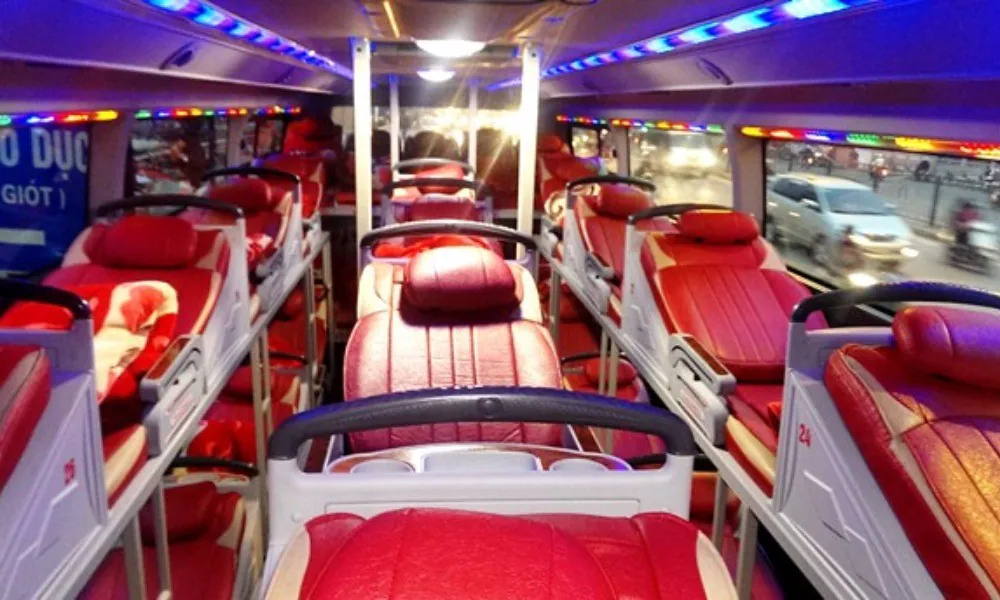
The sleeper buses in Vietnam are an institution. They’re dirt cheap. They’ll get you from A to B(ish.) But they are not comfortable. You’re stuffed into a weird semi-reclined pod. The driver is blasting his horn all night. It’s 99% guaranteed you will be woken up at 5am at a random bus station. Then, after you’ve blearily stepped off the bus, you’ll be confronted by a horde of locals offering you a (generally overpriced) taxi to the centre. I’ve done it. I’ve paid my dues. If your budget is super tight, go for it. Otherwise, get the train. Your spine will write me a thank-you note.
Option 4: The ‘I Am James Dean’ Motorbike Journey

If you’re coming to Hue from Hoi An or Da Nang, this is the one. Rent a motorbike, put your main luggage on a forwarding service (they drive it to your hotel in Hue for you—it’s brilliant.) Then ride the Hai Van Pass yourself. You get to stop where you want, take those epic photos, and feel the wind in your… well, in your helmet, because you must wear a helmet. It’s an iconic ride for a reason.
I did the trip in reverse from Hue to Hoi An with LeFamily Riders. They do a kind of guided tour where you hop on the back of a motorbike and go over the pass. Again you get the views and to see parts of Vietnam others may never see. What you don’t get is the terror of negotiating Vietnamese traffic as someone local is doing that for you, so you can concentrate on the scenery! Read more about this in my next blog post about Hoi An.
Part 2: Where to Lay Your Weary, Full-of-Dumplings Head

Okay, you’ve arrived. Where to stay? Hue is split by the Perfume River (which, by the way, doesn’t smell much like perfume, but it’s lovely).
-
The North Side: This is where the Citadel (the big imperial city) is. It’s quieter, more traditional, and feels very local. It’s beautiful, but it gets very sleepy after 8pm.
-
The South Side: This is the “New City.” This is where you’ll find the main hub of hotels in Hue, as well as restaurants, bars, and backpacker joints.
My advice? Stay on the South Side. You’ll be within walking distance of all the best food and nightlife, and it’s just a short (and very pleasant) walk or Grab (Vietnam’s Uber) ride across the river to the Citadel.
I found this sweet spot in a small alley just off Vo Thi Sau Street. This area is brilliant. It’s got a cluster of hostels for the budget crowd (DMZ Hostel is a popular one.) There’s also a ton of fantastic mid-range “boutique” hotels that give you a comfy bed, blasting A/C, and a killer breakfast for $30-50 a night.
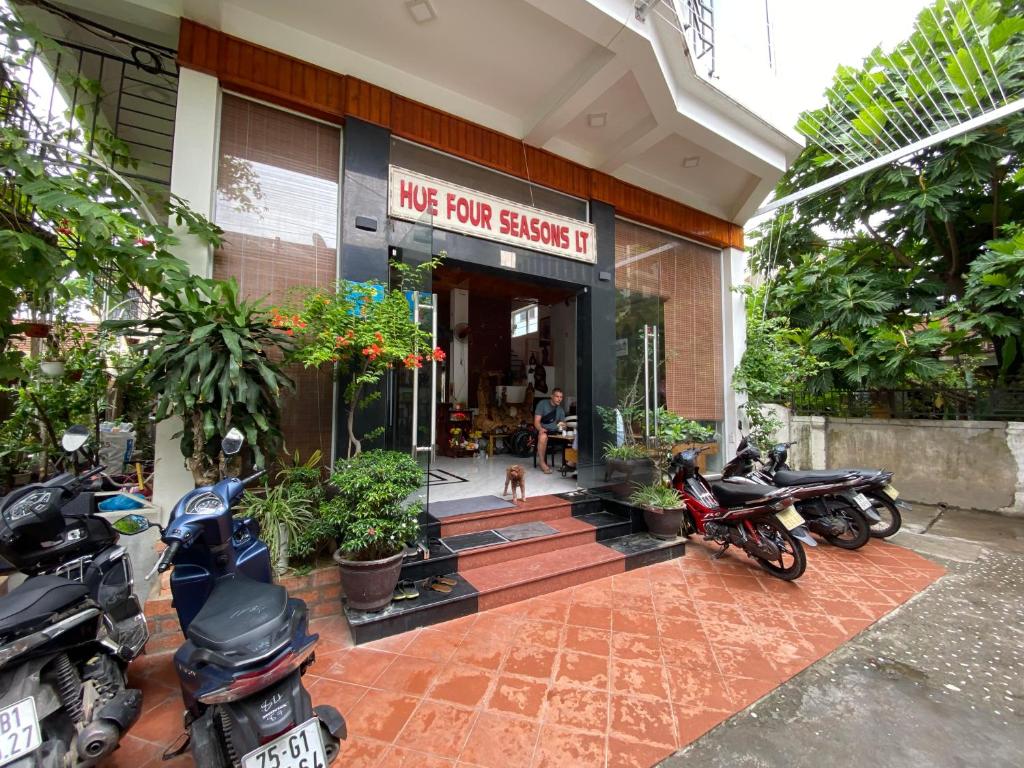
I stayed at the Hue Four Seasons Hotel and it was perfect. Lovely family, clean rooms, a shaded terrace and everything I needed after a long, hot day. I paid $56 for three nights for one of the best rooms. If you book direct a city view room with aircon is currently $21 a night, but if you’re happy with a garden view it’s $18. All rooms have the all important aircon!
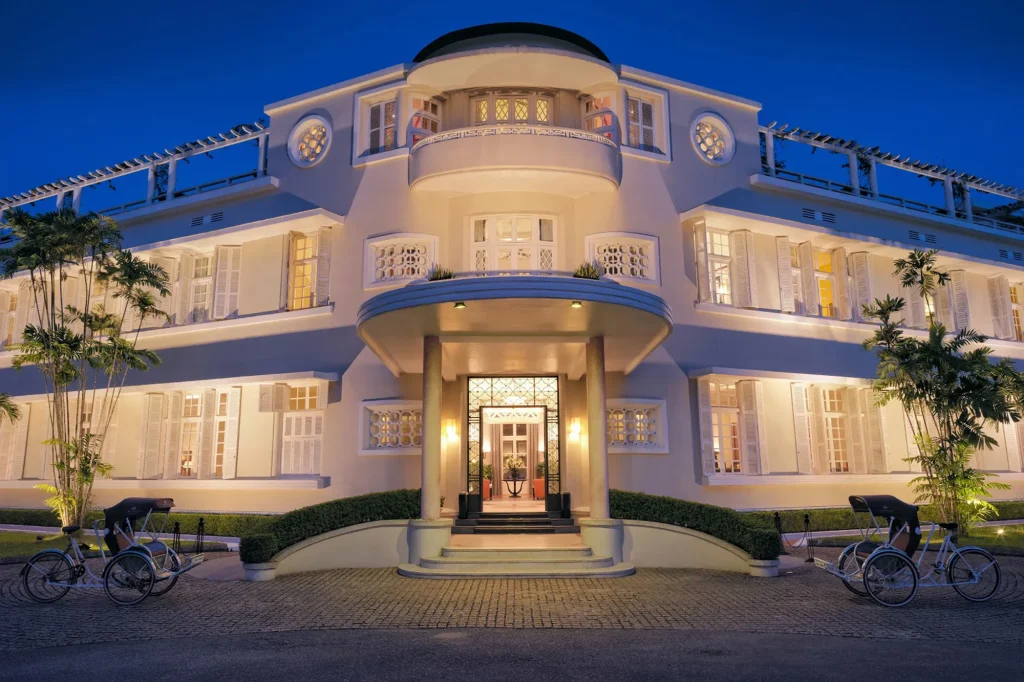
If you’re feeling fancy, like, “I’m an emperor in training” fancy, then the one and only place to be is the Azerai La Residence, Hue. It’s a stunning 1930s art-deco mansion right on the river, looking at the Citadel. I couldn’t afford to stay, but I did go to its 1930s-style bar, Le Gouverneur, for a wildly expensive (by Vietnam standards) but flawless gin and tonic. Totally worth it to feel like a millionaire for an hour.
Part 3: The Sights – Dragons, Tombs, and Post-Apocalyptic Water Parks
You can’t just eat and drink (well, you can, but you probably shouldn’t). The history in Hue is epic. This was the capital of Vietnam from 1802 to 1945, and the Nguyen emperors who ruled from here did not do subtle.
1. The Citadel (The Imperial City)
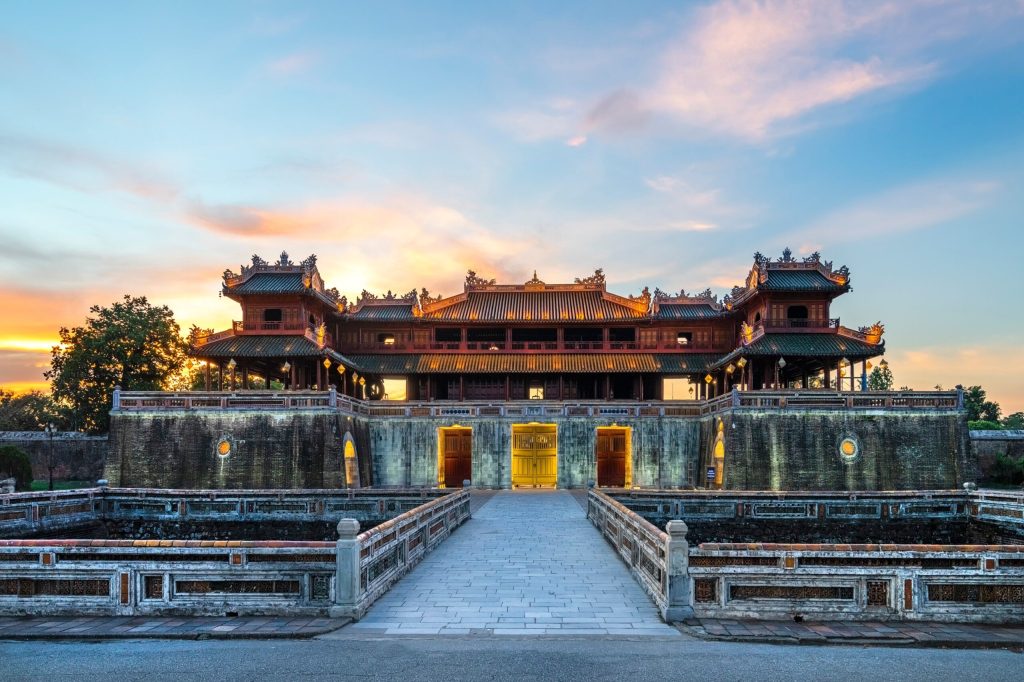
This is the main attraction. It’s not just a building; it’s a city within a city. You walk across a huge moat, through a massive flag tower, and into this sprawling complex of palaces, temples, gardens, and courtyards.
A huge chunk of it was destroyed in the 1968 Tet Offensive in the Vietnam war. You can still see the bullet holes and bomb damage. But what’s left, and what’s been restored, is stunning. The vibrant red and gold lacquer work, the detailed dragon carvings, the ‘Forbidden Purple City’ (where only the emperor, his concubines, and eunuchs could go.) Give yourself at least three hours. It’s massive!
My Tip: Wear comfy shoes. I saw someone in wedge sandals and I prayed for her ankles. Also, get a guide. I hired a lovely woman at the entrance, and it was the best $20 I spent. Without her, it would have just been a lot of pretty buildings. With her, it was a story of intrigue, betrayal, 143 wives, and staggering history.
2. The Royal Tombs
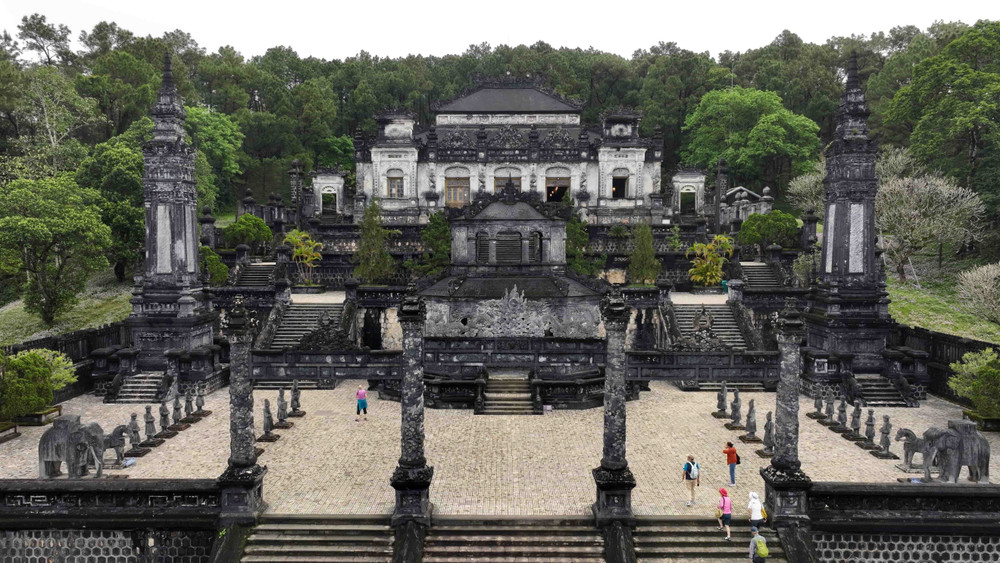
This is where Hue gets really cool. The emperors didn’t just build palaces; they spent years (and fortunes) designing their own tombs. Giant, private paradise-parks for the afterlife. They are scattered along the river south of the city, and you can hire a Grab, a dragon boat, or a cyclo driver for the day to see them.
You can’t see them all. Don’t try. Just pick two (or maybe three). I picked the “big two,” and the contrast was perfect.
-
Minh Mang’s Tomb: This guy was all about zen. His tomb is perfectly symmetrical, set in a forest with lakes, bridges, and beautiful, peaceful pavilions. It’s elegant, it’s calm, and it makes you want to write poetry.
-
Khai Dinh’s Tomb: This tomb is absolutely, fantastically bonkers. The emperor was a fan of French architecture, so it’s this huge, black, gothic-looking concrete monster on a mountainside. Then you go inside, and your jaw hits the floor. It’s an explosion of intricate, beautiful mosaics made from thousands of smashed pieces of porcelain and glass. It’s goth, it’s rococo, it’s Vietnamese, it’s nuts. I loved it.
3. Thien Mu Pagoda

This is the one you’ve seen on all the postcards. It’s a seven-storey pagoda, a symbol of the city, sitting on a hill overlooking the Perfume River. It’s beautiful, but the most powerful thing here is tucked away in the back. It’s the blue Austin car that the monk Thich Quang Duc drove to Saigon in 1963, where he famously self-immolated to protest against the government. Seeing the car, and the famous photo next to it, is one of those travel moments that just stops you in your tracks.
4. The ‘Abandoned’ Water Park (Ho Thuy Tien)
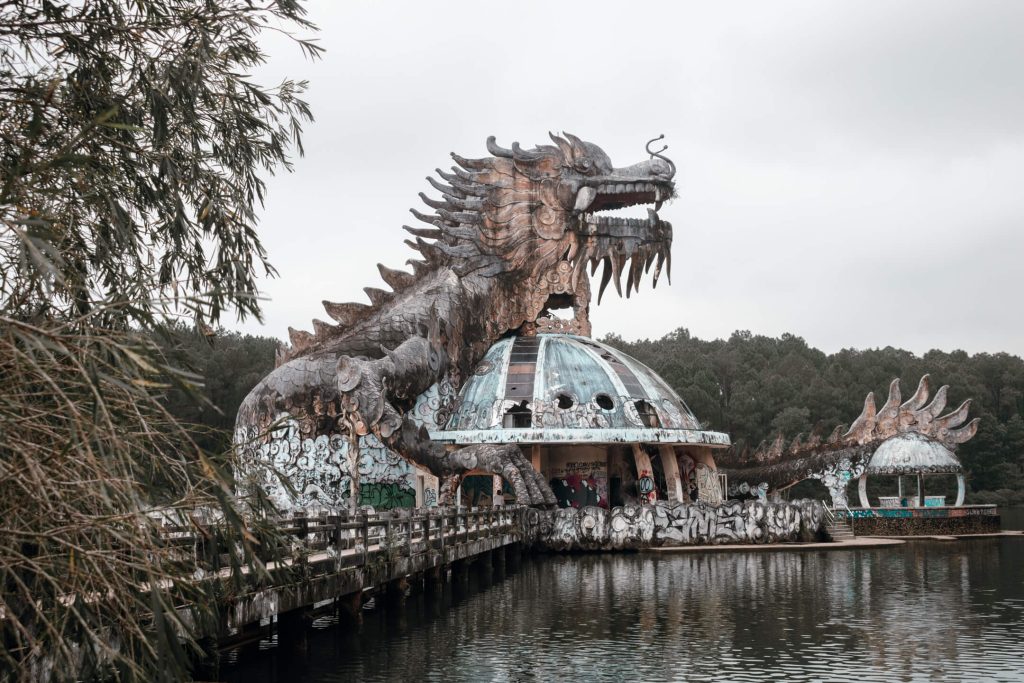
Okay, now for something completely different. This place is technically closed. But this is Vietnam. I rolled up on a scooter, found a “guard” who, for a small “coffee money” tip (about 50,000 VND – about £1.50), happily waved me in.
It’s a huge, post-apocalyptic park that’s been left to the jungle. The centrepiece is a giant, three-storey dragon you can climb up inside, staring out over a murky lake. There are water slides covered in vines, half-submerged stadiums. It’s eerie, it’s beautiful, and it’s one of the coolest “urban exploration” spots I’ve ever been to. Go before they actually close it or, worse, “fix” it.
Part 4: The Real Reason You’re Here – The Food (And Drink!)
Let’s be real. The history is cool. The tombs are great. But I came to eat.
Hue is, without a shadow of a doubt, the culinary capital of Vietnam. The food here is different. It’s not about huge, hearty bowls (though they have those too). It’s about royalty. The story goes that the emperors demanded 50 different dishes at every meal, so the chefs had to get creative, making small, delicate, flavour-packed bites.
This is the land of the bánh (dumplings and cakes). You will eat so many. You will not be sorry.
The Must-Eats
Bún Bò Huế

Forget Phở. This is the king of Vietnamese noodle soups. The broth is a deep, fiery red, humming with lemongrass, shrimp paste, and chili. It’s loaded with slices of beef, a big pork knuckle, and yes, cubes of congealed pig’s blood. Don’t be a baby. Try the blood cube. It has a mild, savoury, slightly irony flavour, and it’s part of the experience. I had my best bowl at Bún Bò O Cua down a tiny alley.
Bánh Bột Lọc
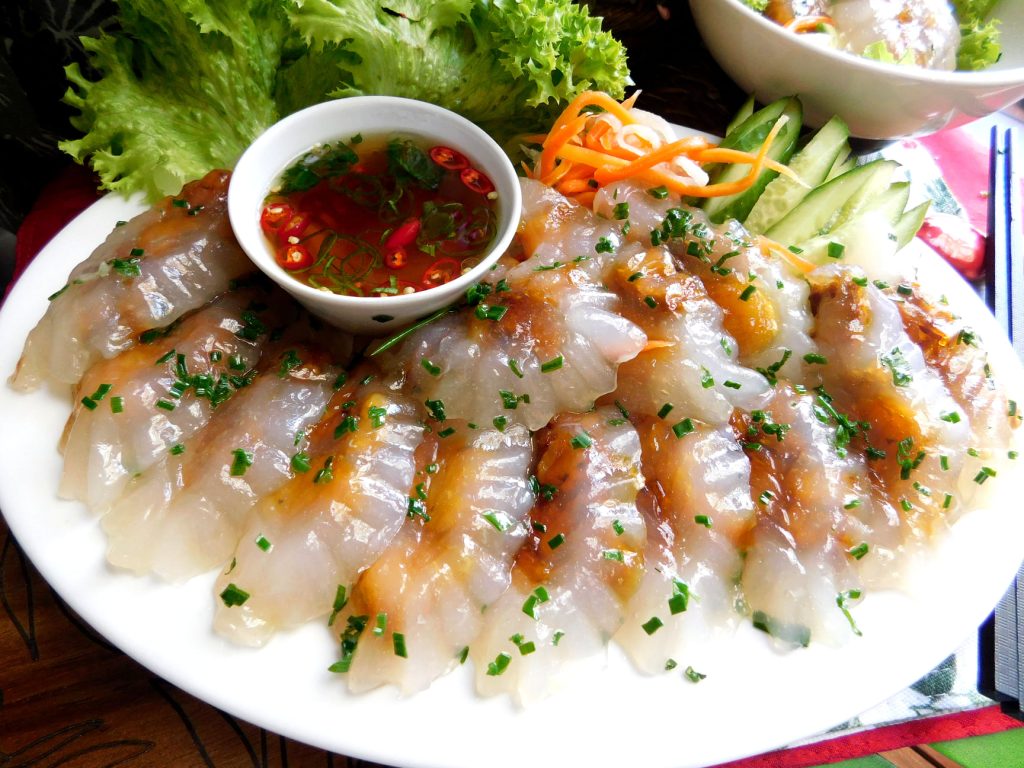
My personal obsession. These are chewy, translucent tapioca dumplings filled with a tiny shrimp and a bit of fatty pork, all wrapped up in a banana leaf (lá) and steamed. You unwrap the sticky, glorious little packet and douse it in nước chấm (sweet, spicy fish sauce dip). I ate… I’m not proud of the number. Let’s say “many.”
Bánh Bèo
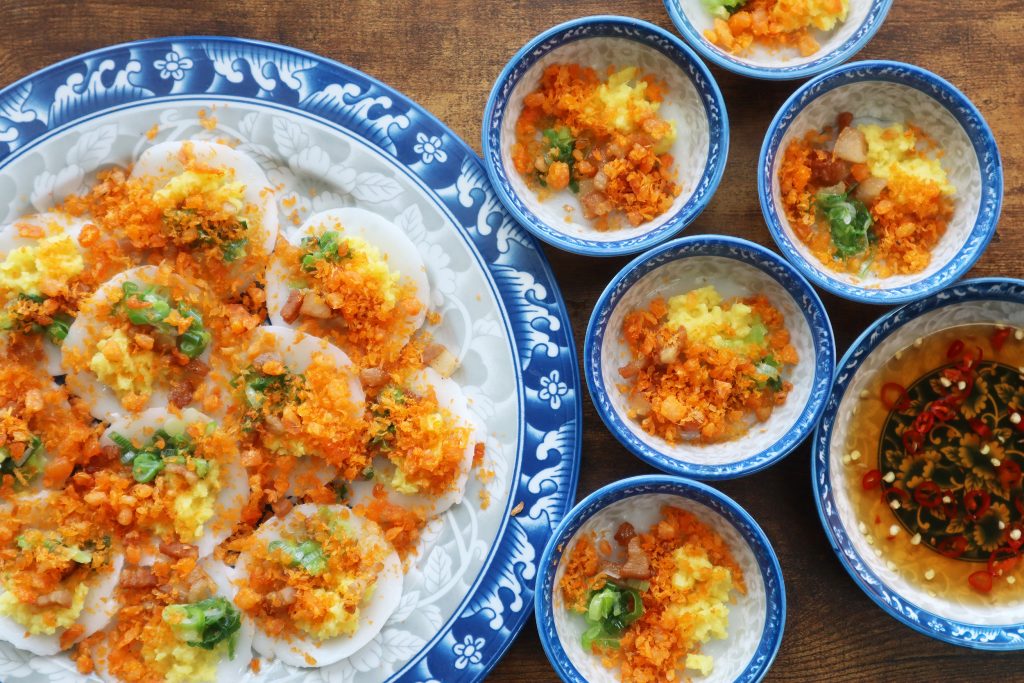
Tiny, steamed rice-flour saucers, topped with dried shrimp, crispy pork skin, and spring onion oil. You’re served a tray of about 15 of them. You drizzle the sauce over them all and use a tiny spoon to scrape them out. It’s delicate, it’s savoury, it’s addictive.
Bánh Khoái
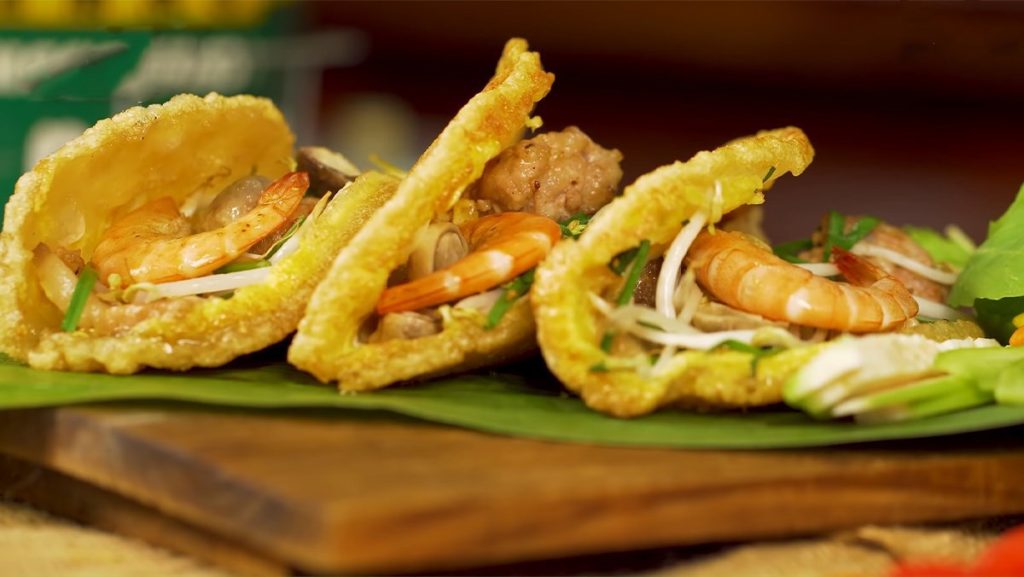
The “Hue Pancake.” It looks like a Bánh Xèo from the south, but it’s smaller, thicker, and crispier. It’s fried to a golden-brown shell, stuffed with pork, shrimp, and bean sprouts, and served with a thick, peanut-based dipping sauce that will change your life. I went to Bánh Khoái Hanh (it’s touristy, but a great “sampler” spot) and rolled out of there.
Nem Lụi

This is genius. It’s seasoned pork mince, moulded onto a lemongrass stalk and grilled over charcoal. You get a DIY kit. A plate of the pork skewers, rice paper, a mountain of fresh herbs, and that same peanut sauce. You pull the pork off the skewer (which is now infused with lemongrass oil), wrap it all up, and dip. It’s interactive and delicious.
Where to Eat and Drink
Honestly? Pull up a tiny plastic stool. Anywhere in Hue that is crowded with locals at 7pm is where you want to be. The best food is in the alleys.
Đông Ba Market
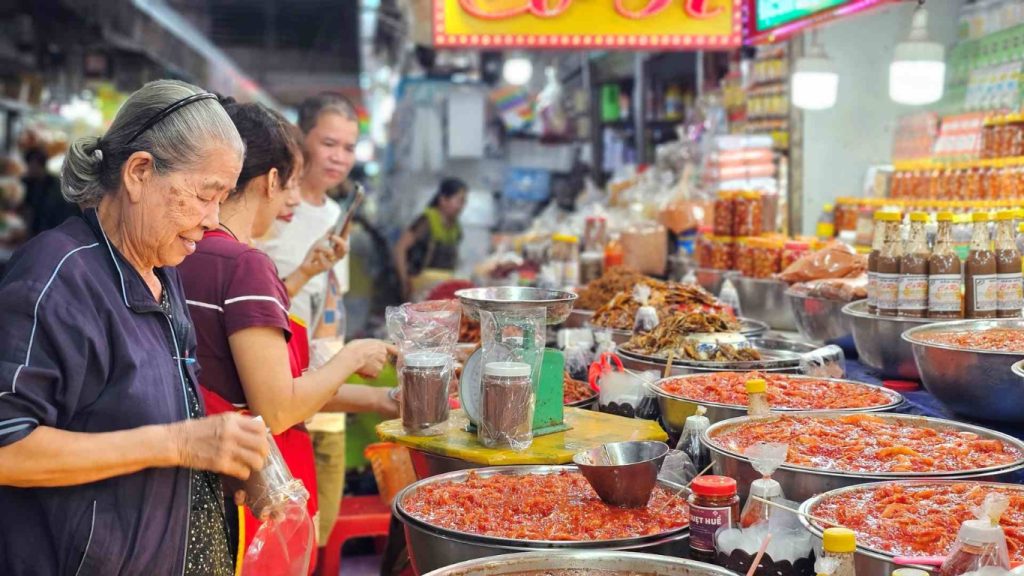
Go here in the morning. It’s a riot of sights and smells. Head to the back where the food stalls are and just point. This is where the locals get their Bún Bò.
Phố đi bộ (The ‘Walking Street’)
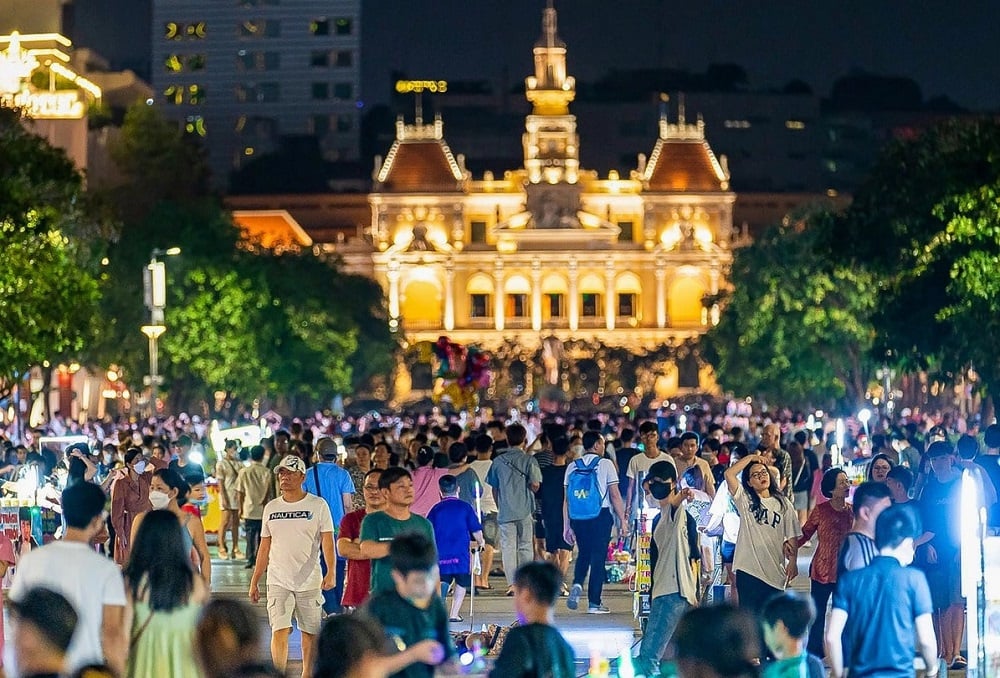
On weekend nights, they close down Vo Thi Sau and the surrounding streets. It becomes a massive party. Street performers, hundreds of food stalls, and bars spilling onto the pavement.
For Drinks
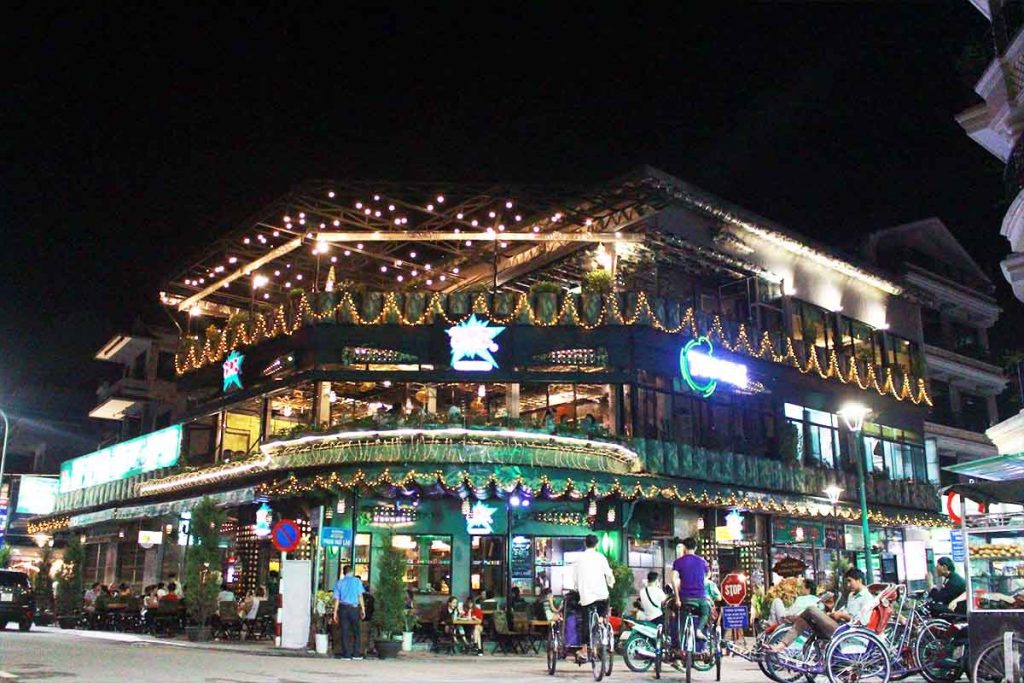
The local beer is Huda. It’s crisp, it’s light, it’s cheap, and it’s brewed in partnership with Carlsberg. It is the perfect antidote to a humid Hue afternoon. You’ll find it everywhere for 15,000 VND (about 60c). For cocktails, go to the DMZ Bar (a classic tourist haunt, but fun) or get fancy at La Residence.
The Final Word
I went to Hue expecting a history lesson. I left with a new-found obsession with tapioca dumplings and a genuine love for a city that feels both ancient and alive.
It’s not a 24-hour party city. It’s not a manic commercial hub. It’s a city that asks you to slow down. Rent a bicycle. Cycle along the river at sunset. Stop for a cà phê sữa đá (iced coffee with condensed milk). Eat another Bánh Bèo. Watch the dragon boats light up the river.
Don’t just pass through Hue. Give it three days. Let it work its magic on you. It’s a city of emperors, ghosts, pagodas, and—thank god—some of the best food on the planet.
In my next blog post about Asia I’ll tell you all about beautiful Hoi An.

